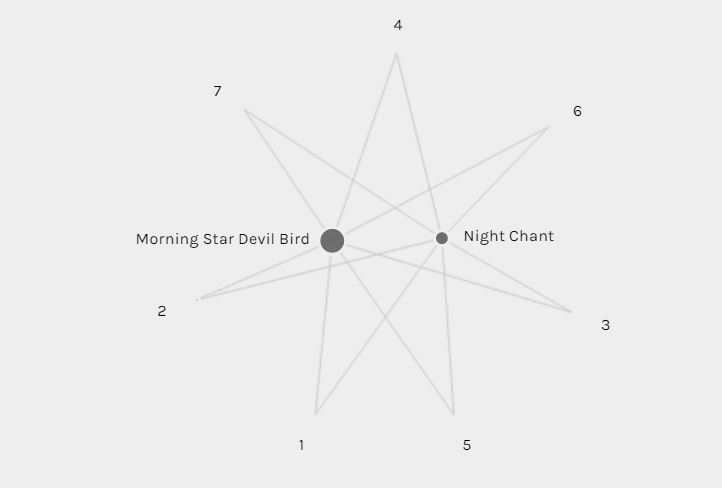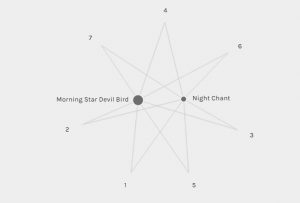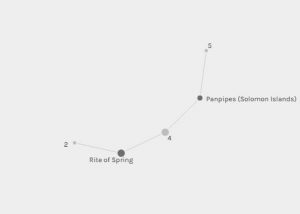Task 9: Network Assignment
I found this task challenging to navigate. Within the Palladio tool, I found myself floundering about attempting to find visuals and connections between groups and tracks, and tracks and weights.
The visualizations gave interesting context to the choices the others made in their top 10 curated list. However, I found this information null when attempting to formulate the rhyme and reason for those choices. Each individual made their list based on a rigid or loose criterion that they developed. The data presented in the Palladio knows none of that information – but rather just a series of links and groups. As you can see in the image below regarding Group-Track Network, many assumptions can be made as to why specific songs were selected by more groups or the reasons as to why certain groups selected less weighted tracks – but that information is beyond our understanding within this program. The connections quickly become arbitrary when attempting to attach reasoning.
As I was floundering about in Palladio, attempting to come across a pattern or find a strong relation I ended up looking at the individual tracks themselves. I decided to look at specific tracks and the number of groups that selected these tracks.
In image A, I compared the Rite of Spring, and Panpipes (Solomon Islands). In both of these songs I, personally, found that challenging to listen to. They were abstract, and did not have a steady rhythm, at times they felt forceful and grating. One could assume, that most groups did not choose either of these songs for any of the reasons I listed reasons. Comparatively, the songs “Morning Star Devil Bird, and Night Chant, both show much higher popularity in curation lists. I found these songs easier to listen to and were able to follow their tempo and rhythm, the sounds from the instruments used were appealing and less abstract. Both of these songs as well as showcased native languages and the use of the human voice. It could be assumed that these songs were chosen by more groups, and therefore higher connectivity, because of these characteristics.
The web of data collected from the Task 8 Curation List was combined into a network of interconnected hyperlinks and metadata that established connections. These vertices or nodes within the data were the tracks of songs selected. The edges or the links between the nodes were the groups that chose the tracks within their curation lists.
As previously stated, connections, assumptions, and interpretations can be made as a result of the connections within the network through comparison and analysis of the data. But the individual reasons and criterion are still missing taking away from the results.
The music we listen to and the texts we engage with are heavily influenced by culture, environment, and personal experiences. For example, the reason I chose Johnny B. Goode, is not only because it is an easy song to listen to, with an upbeat tempo and catchy tune, but it reminds me of my childhood watching the trilogy “Back to the Future” with my family. Those memories and reasons behind the song influenced how I curated my list.
Similarly, in Task 3: Speech to Text we transcribed a story using a speech to text app. Our stories missed authenticity, body gestures, voice inflection, intentional pausing, and tempo – leaving the story flat, with errors, and with misinterpretations. The data above miss similar key characteristics – leaving the data with gaps and holes not able to tell the whole story.
Even though we are able to gather some data, identify and potentially find patterns within the types of music, cultures in relation to their level of connectivity we will never understand the whole story.
More information isn’t always better, however in some cases like this one more is needed to truly understand the reasons behind the connections.



